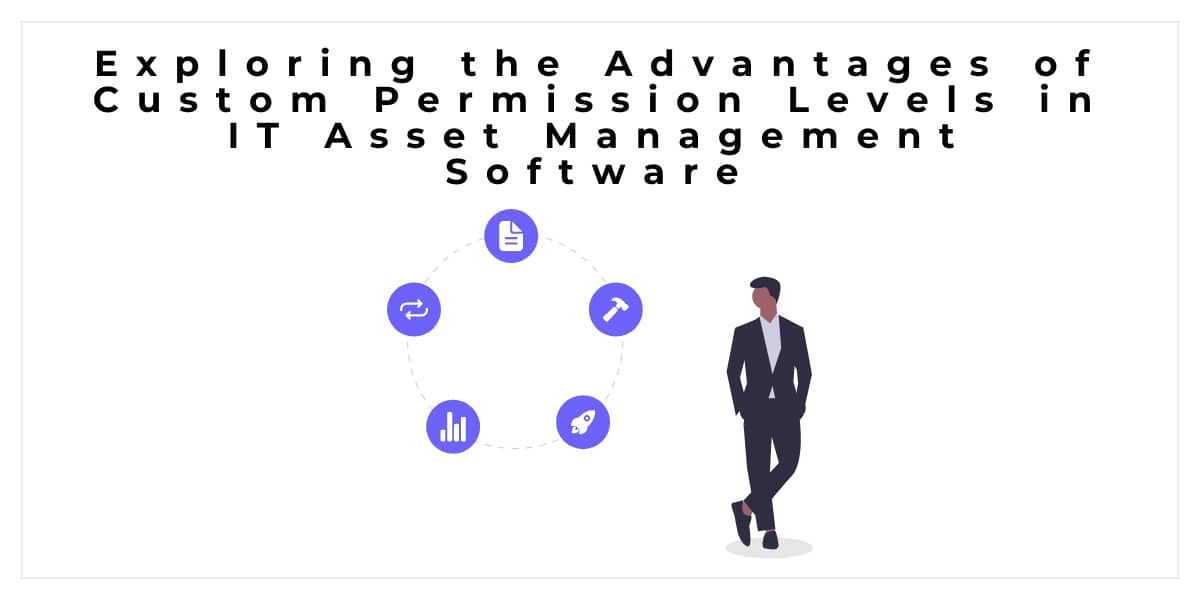IT Asset Management (ITAM) software to streamline operations, optimize IT asset usage and ensure compliance. Software solutions are critical in enhancing security, flexibility, and control. Custom permission levels allow organizations to tailor access rights and privileges to meet their specific needs, resulting in a range of advantages that contribute to efficient Asset Management Software.
Enhanced Security
Custom permission levels offer organizations a higher degree of control over who can access sensitive IT asset data and perform specific actions within the software. By tailoring permissions to match roles and responsibilities, organizations can reduce the risk of unauthorized access and data breaches. For instance, an organization can assign read-only access to IT technicians who only need to view asset information but should not be able to modify it. Conversely, administrators can have full access to all features and functions necessary for managing assets effectively. This fine-grained control enhances data security and ensures that only authorized personnel can make changes or updates to the system.
Regulatory Compliance
Many industries are subject to strict regulatory requirements regarding data security, privacy, and auditability. Custom permission levels in IT Asset Management Software enable organizations to align their access controls with regulatory mandates.
By configuring permissions to match regulatory compliance needs, organizations can maintain proper audit trails, demonstrate compliance during inspections, and prevent unauthorized access to sensitive data. This proactive approach to compliance reduces the risk of penalties, fines, and reputational damage associated with non-compliance.
Improved Efficiency
Custom permission levels allow organizations to streamline their workflows and optimize operational efficiency. Instead of relying on a one-size-fits-all approach to access control, organizations can tailor permissions to match the roles and responsibilities of various team members.
For example, helpdesk personnel may only require permissions to perform asset lookups and create support tickets, while procurement officers need access to procurement-related functions.
Reduced Risk of Errors
When access to IT Asset Management Software is too broad, there is an increased risk of accidental errors or unintentional changes that can have significant consequences. Custom permission levels mitigate this risk by limiting access to necessary functions and data for each user or group. By restricting access to sensitive or critical features, organizations can reduce the likelihood of errors that could lead to asset data inaccuracies, asset loss, or compliance violations.
Tailored User Experience
Custom permission levels can provide a more user-friendly and intuitive experience by simplifying their interface. Instead of overwhelming users with a complex interface filled with options they don't need, organizations can customize interfaces based on each user's role. For instance, a technician responsible for hardware maintenance may have a simplified interface focused on asset information, maintenance schedules, and related tasks.
Accountability and audibility
Effective IT asset management requires accountability and auditability. Custom permission levels help organizations establish a chain of responsibility for asset management tasks. When users have specific permissions assigned to their roles, it becomes easier to identify who is responsible for various aspects of asset management. In the event of discrepancies, errors, or security incidents, organizations can trace actions back to the responsible individuals or teams.
Conclusion
Custom permission levels in IT Asset Management Software offer a range of advantages that contribute to efficient and secure asset management. They enhance data security, support regulatory compliance, improve operational efficiency, reduce the risk of errors, and provide tailored user experience. Additionally, custom permissions foster accountability and scalability, making them suitable for organizations of all sizes and complexities.








